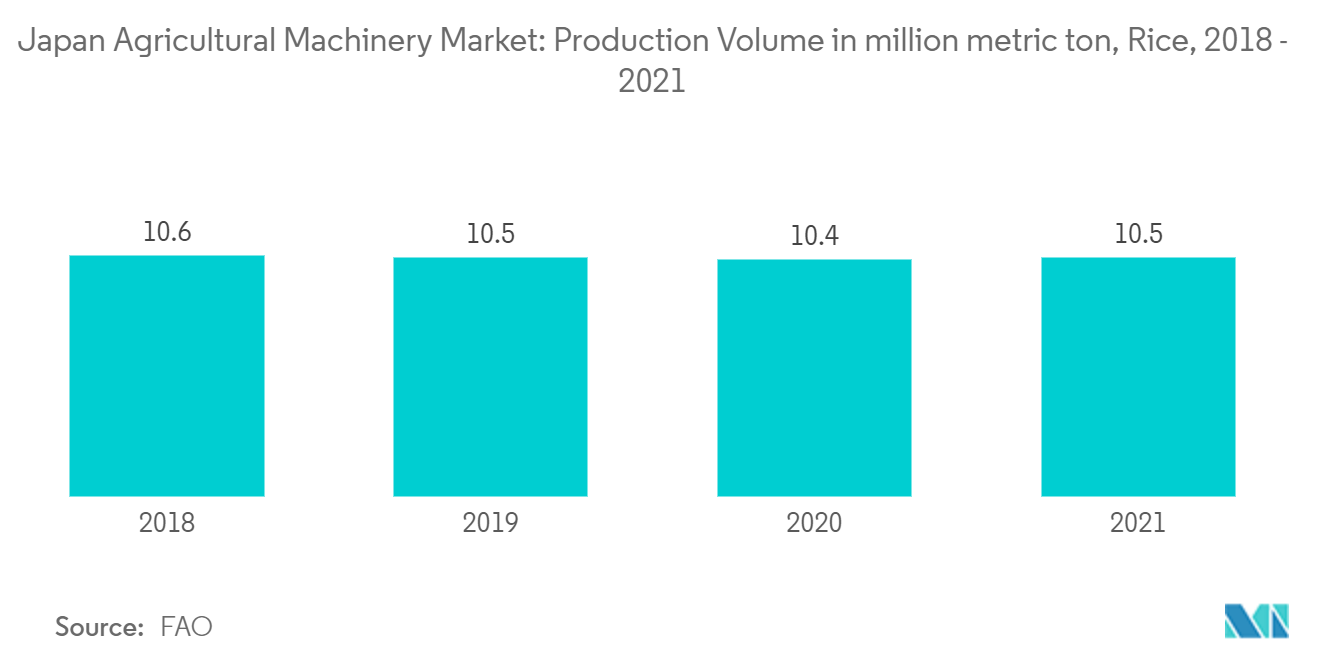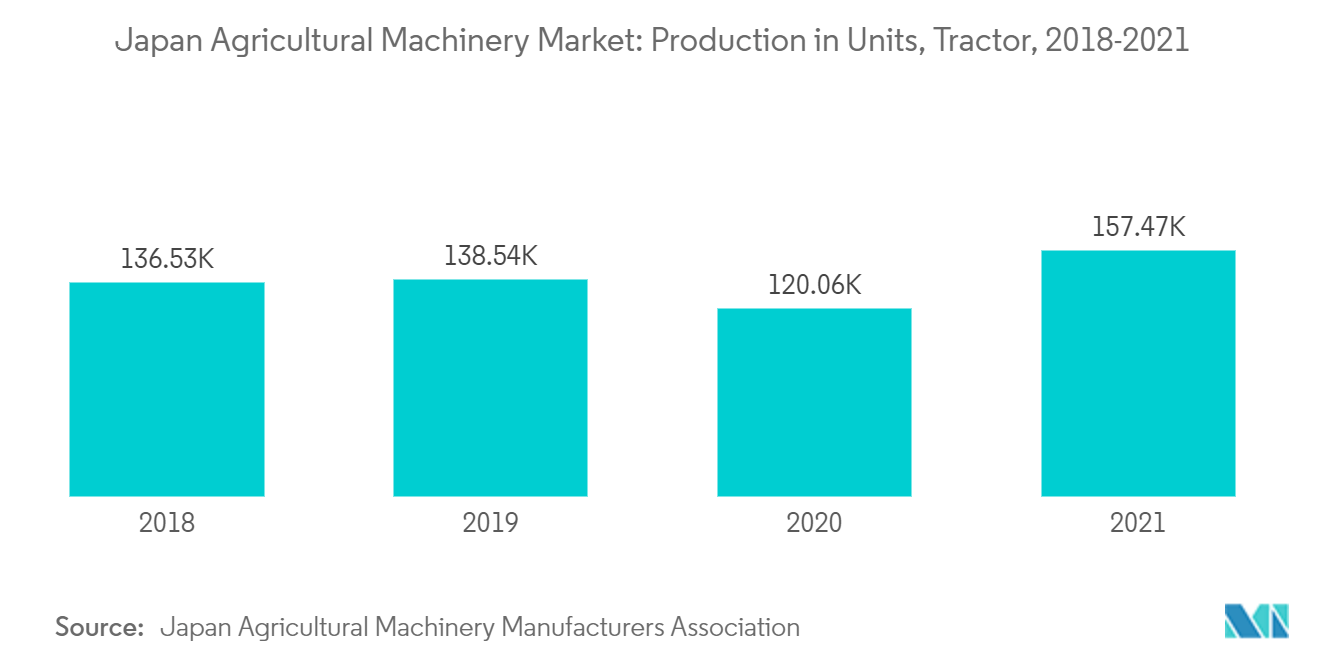Market Trends of Japan Agricultural Machinery Industry
This section covers the major market trends shaping the Japan Agricultural Machinery Market according to our research experts:
The Need to Increase Farm Productivity Triggers the Demand
The land suitable for agriculture in Japan is low, obtaining less productivity to meet self-sufficiency. According to the World Bank, the total agricultural land in Japan was 12% of the entire land in 2020. Additionally, the production of cereals decreased in the past few years. For instance, the production of rice decreased from 10.6 million metric tons to 10.5 million metric tons. It will create food scarcity with the increasing population. Also, it is a challenge to meet the food demands of the Japanese people with limited agricultural land. The Japanese population in 2020 accounted for 215 billion. It causes the urgency to increase farm productivity, which mechanization can achieve. Machines with the latest precision agriculture technology utilize most of the land effectively and aid in increasing production.
Additionally, versatile agricultural machinery usage like rotavators, cultivators, power tillers, combine harvesters, etc., significantly reduces labor dependency. According to Japanese Government Statistics, employment in the agriculture sector in 2021 was 57 thousand, which had decreased by 3% from 2020. This declining agriculture labor population also drives the need for agriculture machinery in the country.
Furthermore, agricultural equipment that reduces wastage is helpful in attaining self-sufficiency. For instance, machines, such as combine harvesters, reduce grain wastage during harvesting and support in meeting the food demand in the country. Therefore, the increased usage supports increased productivity, thereby reducing crop wastage.

Rise in the Number of Tractors
The tractor is one of the primary farm machinery that most farmers use. Tractor usage is increasing in Japan compared to other agricultural machinery. As per the Japan Agricultural Machinery Manufacturers Association, the total agriculture machinery produced in 2020 was USD 3734.78 million. Tractors are valued at 57% of the entire agriculture machinery valued.
Additionally, tractor production was recorded as 157,466 units in 2021. Most tractors sold are mid-sized tractors with 21-30 HP capacity. The number of tractors utilized increased significantly since 2018. The production and purchase decreased slightly in 2020 due to the prevailing pandemic conditions. Lack of labor, increased labor costs, favorable government policies, credit facilities, and the need to increase agricultural productivity are some significant factors causing the rise in tractor sales.
Additionally, rice is Japan's most important crop, accounting for roughly 47% of agricultural output value each year. As rice is the most mechanized crop in the country, the usage of agricultural equipment is more especially tractors, as the primary cultivation operations are led by tractors.
Furthermore, driverless tractors will likely gain popularity in the coming years as they augment farming efficiency compared to other tractors. The Ministry of Agriculture, Forestry, and Fisheries (Japan) is planning to reduce rice production costs by developing technologies like autonomous tractors. Thus, government support pushes driverless tractors, thereby increasing the tractor's sales in the forecast period.


